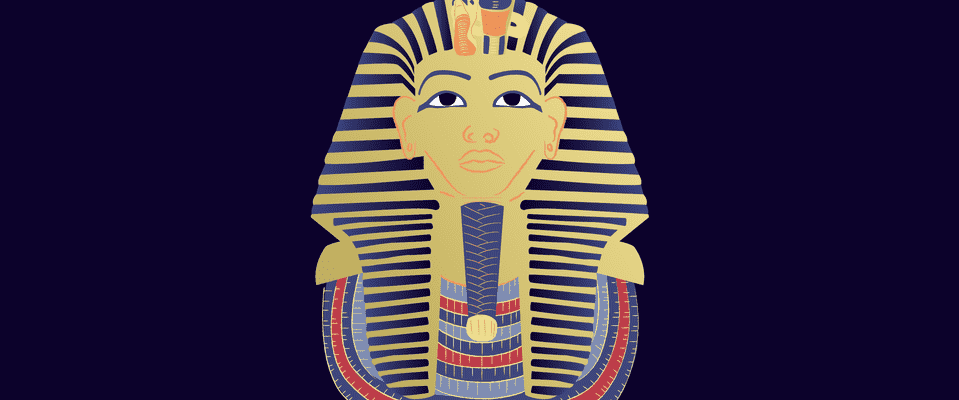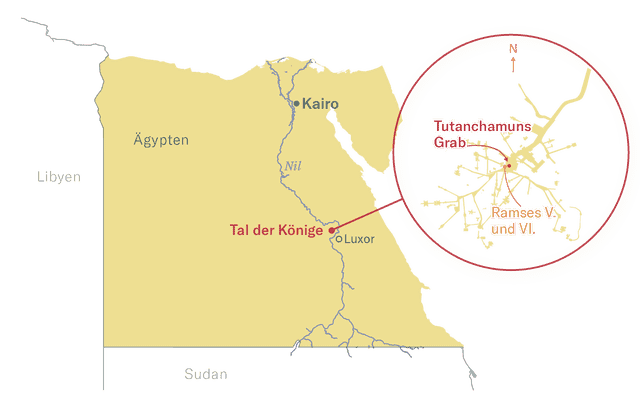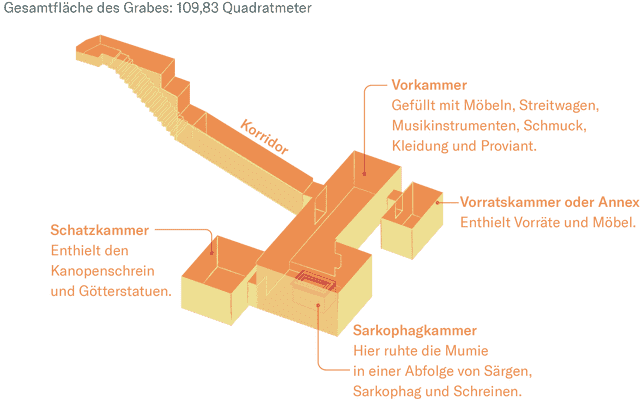100 years ago Howard Carter – or his water carrier – made the most famous archaeological discovery of all time in Egypt’s Valley of the Kings. An overview.
In the so-called Old Kingdom, the Egyptian kings had themselves buried in pyramids near the Nile Delta near what is now Cairo in the north of the country. A thousand years later, in the New Kingdom, they chose a completely different shape and location: the Valley of the Kings on the west bank of the Nile near Thebes or Luxor. The valley is towered over by a striking rocky peak, the shape of which – probably not coincidentally – is reminiscent of a pyramid. Here workers carved chambers, staircases and corridors into the stone, which were richly painted. However, even then the greatest challenge was to protect the royal tombs from looters. It almost never worked.
A well hidden tomb
It is no longer possible to reconstruct exactly why the Briton Howard Carter set his mind to finding the tomb of the Egyptian king Tutankhamun at the beginning of the 20th century. Tutankhamun probably reigned from 1332 to 1323 BC. and was historically completely insignificant. The fact that Carter was successful after a search of several years is the best-known archaeological story of all time: One hundred years ago, on November 26, 1922, Carter broke through the first door. Behind it lay Egypt’s only royal tomb, which had been largely spared by tomb robbers and has therefore been preserved with all its immeasurably rich furnishings.
A small tomb stuffed with precious objects
When Tutankhamun died at the age of 18, the tomb intended for him was apparently not finished. He was therefore buried in a facility originally intended for a private individual.
The chambers were crammed with more than 5000 objects. They should help the dead king to reach the afterlife unharmed and be admitted there.
According to the Egyptians, an intact body was essential for survival in the other world. Tutankhamun’s corpse was therefore mummified, wrapped in bandages with numerous amulets and the head protected with the famous gold death mask. The mummy was placed in three nested mummy-shaped coffins. These in turn lay in a rectangular stone sarcophagus. The sarcophagus was encased by four gilded shrines of increasing size. The outermost one almost completely filled the sarcophagus chamber.
Sources:
Nicholas Reeves, The Complete Tutankhamun: The King, The Tomb, The Royal Treasure, 1990.
André Wiese and Andreas Brodbeck (ed.): Tutankhamun – The Golden Hereafter. Treasures from the Valley of the Kings, 2004.


